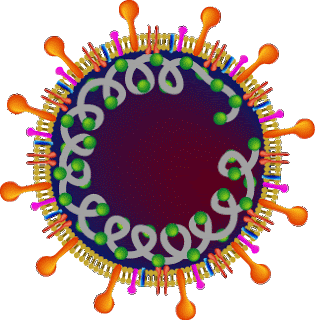The virus responsible for COVID-19, which is called SARS-CoV-2 has not mutated sufficiently to cause a problem. This should be good news for the development of effective vaccines. The evidence for this has been provided by analysis work from the MRC's University of Glasgow Centre for Virus Research.
One type of COVID-19 virus
Recent research published in Virus Evolution had suggested that more than one type of SARS-CoV-2 was now circulating in the pandemic, with one strain being more aggressive and causing more serious illness than the other. However, using analysis of virus samples, scientists have been able to show that only one type of the virus is currently circulating.
Viruses, including the one causing COVID-19, naturally accumulate mutations in their genetic sequence as they spread through populations. However, most of these changes will have no effect on the virus biology or the aggressiveness of the disease they cause.
It is important people are not concerned about virus mutations
Earlier this year, it was reported that scientists had found two or three strains of SARS-CoV-2 circulating in the population, evidenced by certain mutations that had been detected. Mutations can be detected by observing changes in the genetic sequence using a new technique known as GLUE, which is a bioinformatics method for determining virus sequence data.
 CoV-GLUE tracks SARS-CoV-2
CoV-GLUE tracks SARS-CoV-2
According to this form of data (following extensive analysis of the virus genomes), the scientists have demonstrated that the mutations that were detected are unlikely to have any functional significance, and importantly, don’t represent different virus types.
CoV-GLUE tracks SARS-CoV-2’s amino acid replacements, insertions and deletions, which have been observed in samples from the pandemic. To date the database has catalogued 7,237 mutations in the pandemic. While this may sound like a lot of change, scientists confirm that it is a relatively low rate of evolution for an RNA virus, and they expect more mutations will continue to accumulate as the pandemic continues.
On average, most observed mutations would be expected to have no, or minimal consequence to the virus’s biology. However, tracking these changes can help scientists better understand the virus pandemic and how COVID-19 is spreading in the community.
Dr Oscar MacLean said: “By analysing the extensive genetic sequence variation present in the genomes of the SARS-CoV-2 virus, the evolutionary analysis shows why these claims that multiple types of the virus are currently circulating are unfounded. It is important people are not concerned about virus mutations – these are normal and expected as a virus passes through a population. However, these mutations can be useful as they allow us to track transmission history and understand the historic pattern of global spread.”



